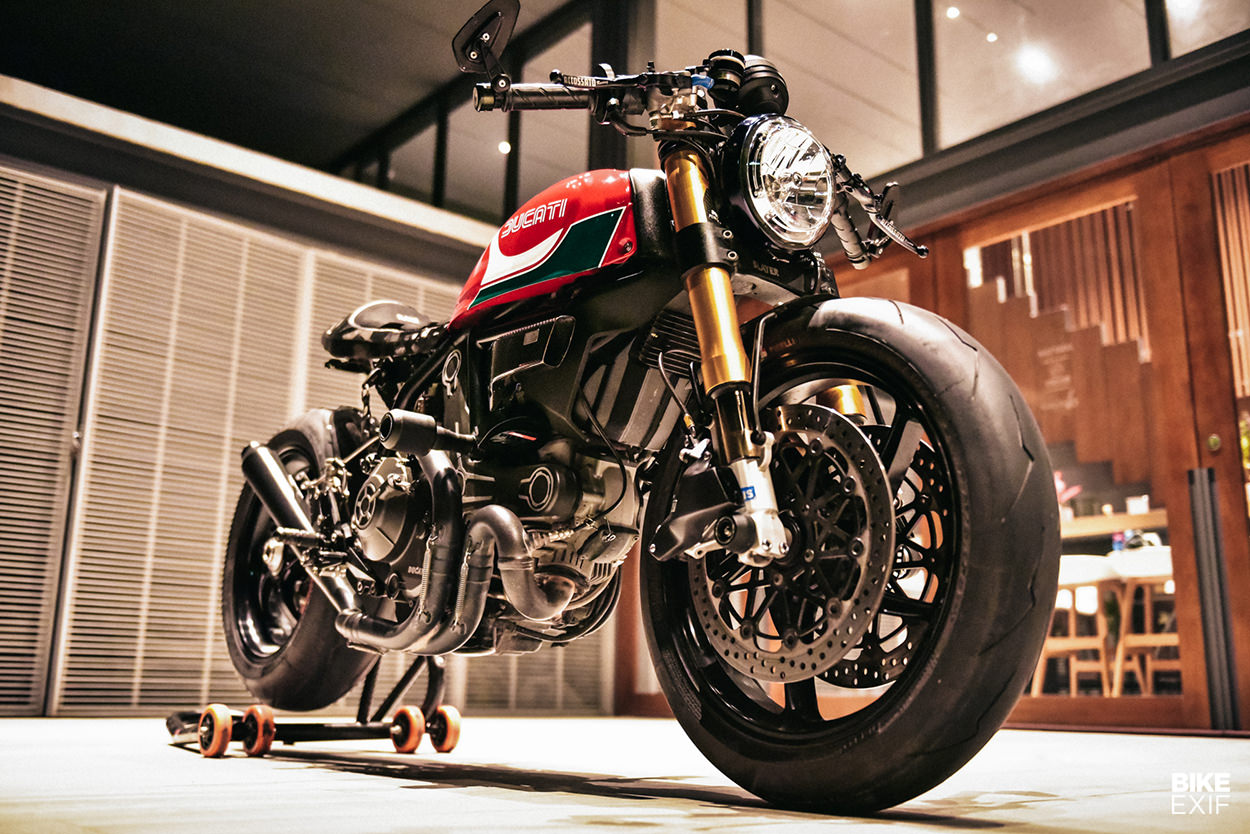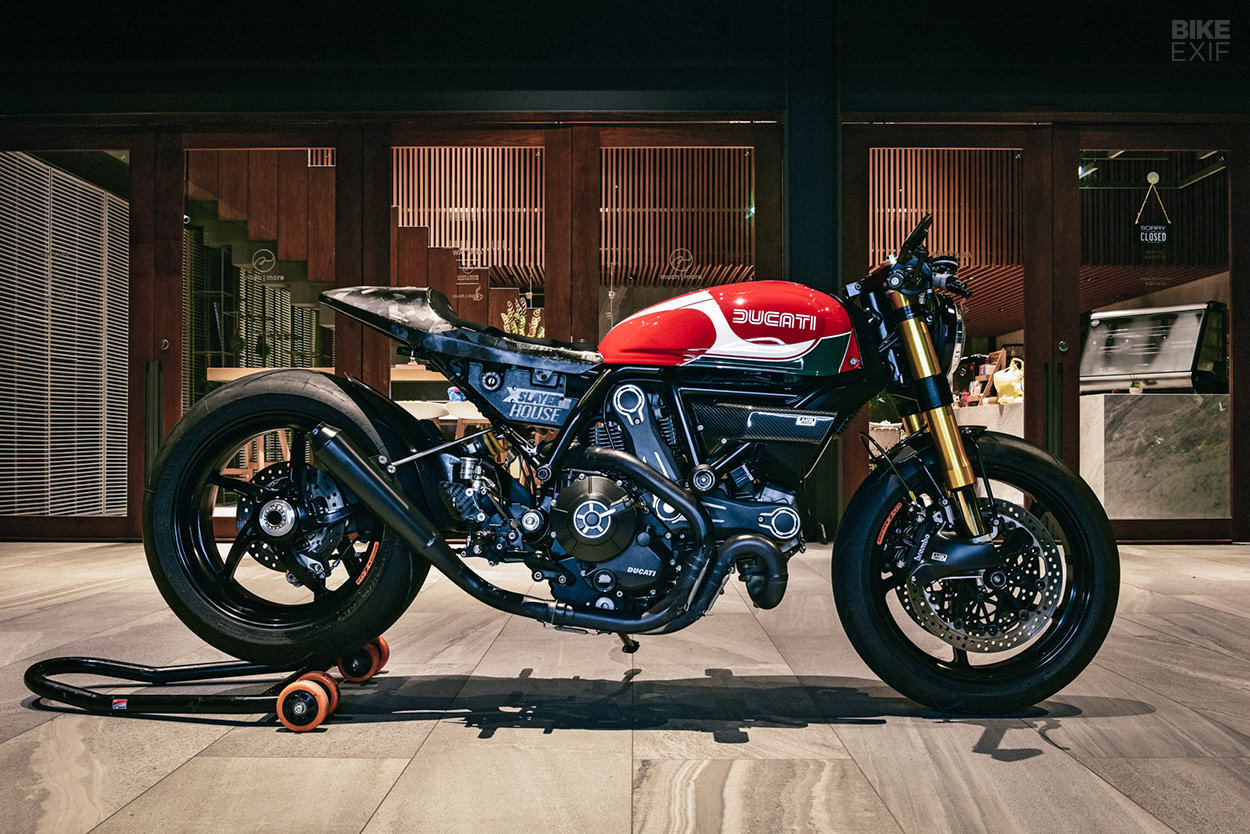
We’re always intrigued when design professionals customize a bike — and even more so when when they’re automotive specialists.
This long, low and heavily-upgraded Ducati comes from Nattapat Janyapanich, who lives in Thailand and has designed bikes for moto manufacturers in Southeast Asia.
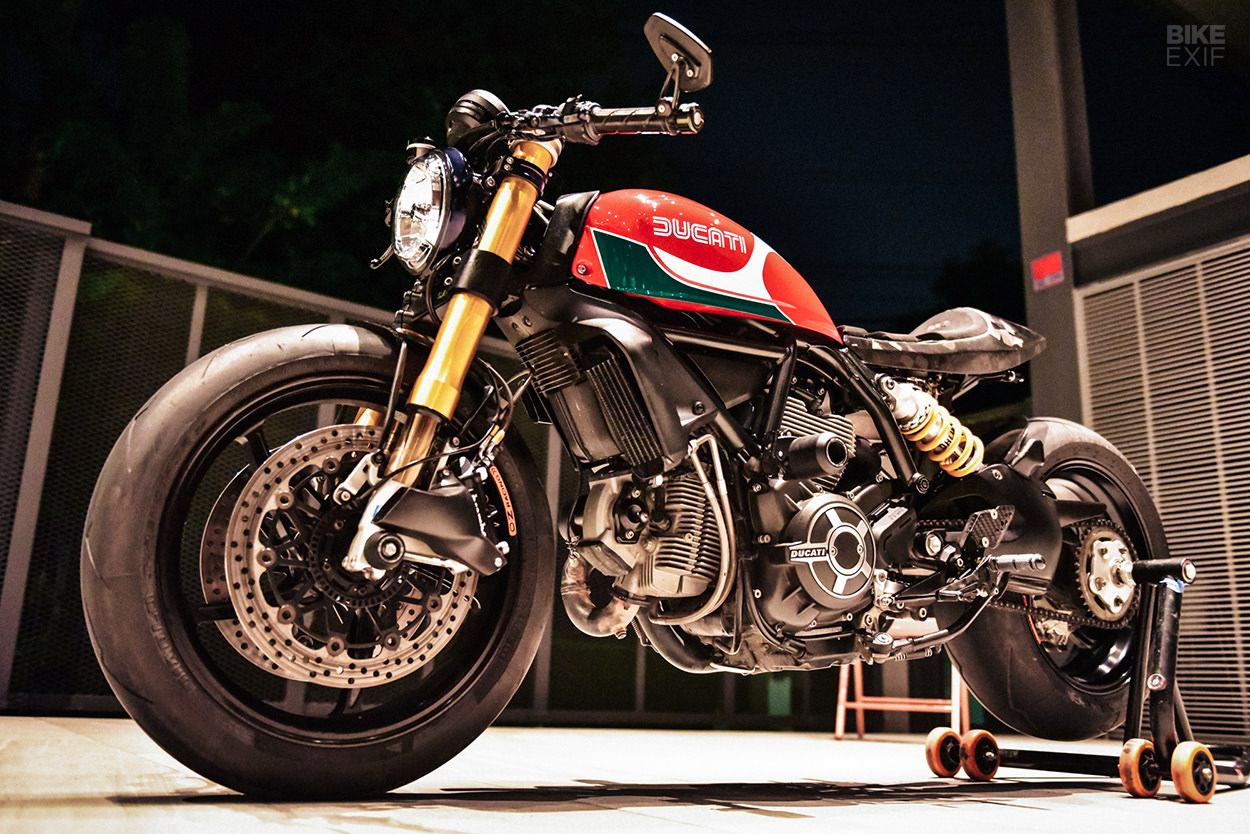
“I’ve been following Bike EXIF since I started work in 2010,” he tells us. “It’s my inspiration for designing motorcycles at work.” Building custom bikes is Nattapat’s after-hours hobby, and he works under the name ‘Slayer House.’
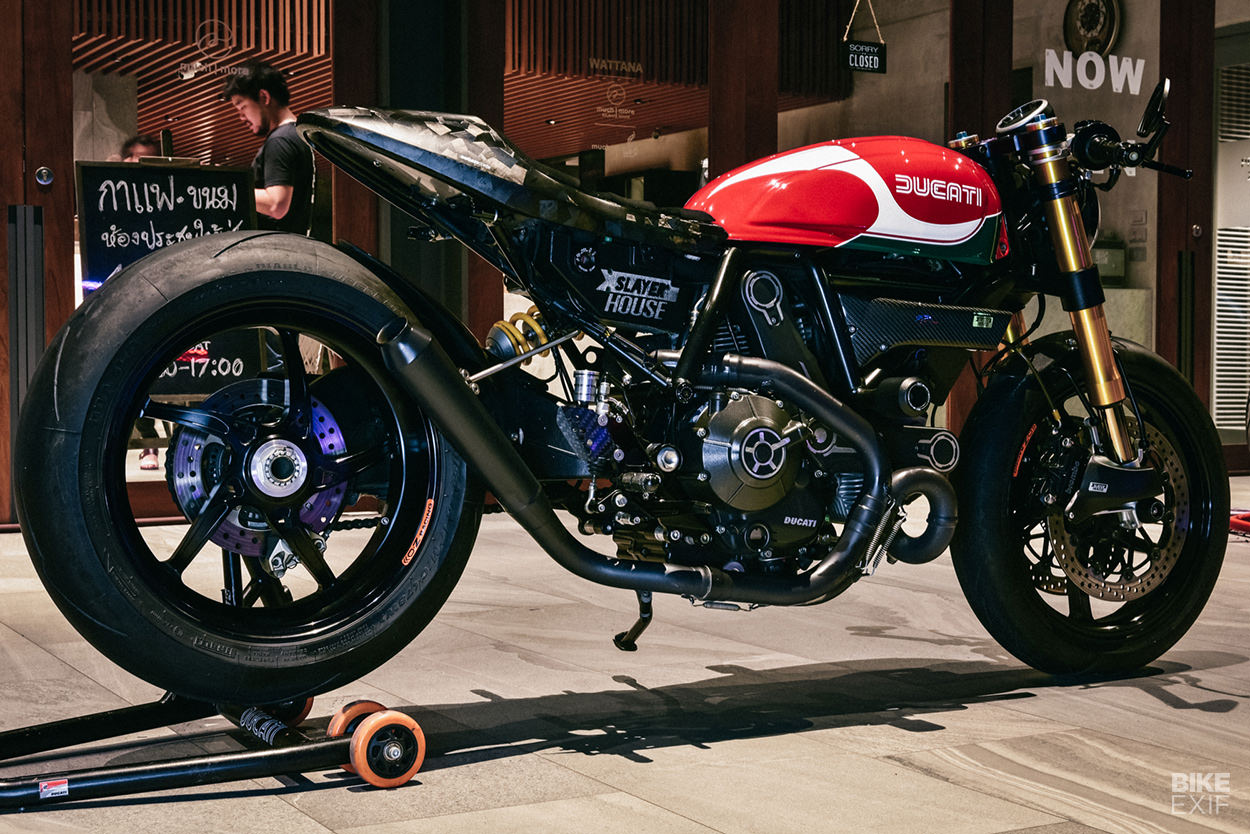
It’s also something of a test bed. “I wanted to try building a compact cafe racer, but with low and long proportions—drag racer style,” he says.
Nattapat started by upgrading the dynamics, replacing the stock Kayaba forks with Öhlins forks from a Ducati 999R (and installing an Öhlins shock to match).
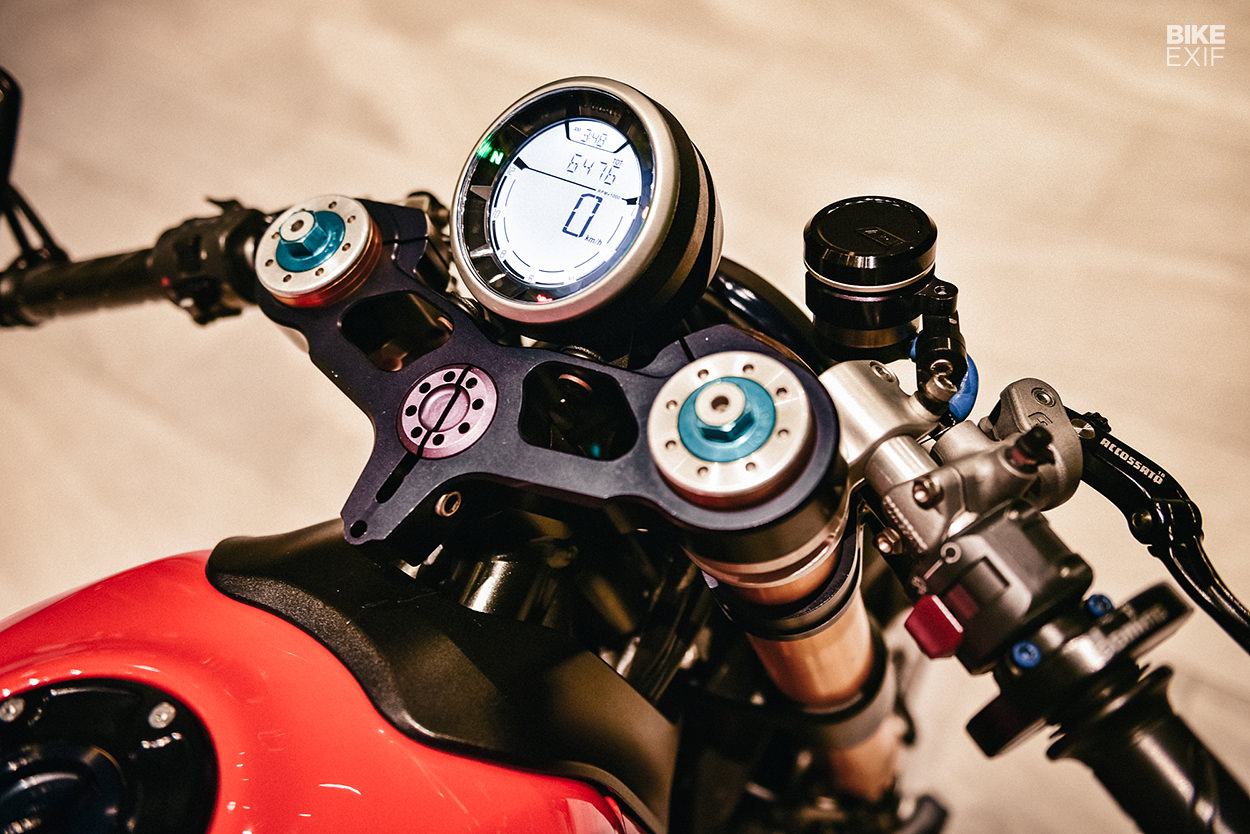
The triple trees are from a 999R too, but Nattapat has modified them slightly via laser cutting and adding a mount to hold the speedo on the visual centerline.
Clip-on bars replace the rather upright conventional bars fitted by the factory, and the headlight has been repositioned to sit snugly against the fork tubes.
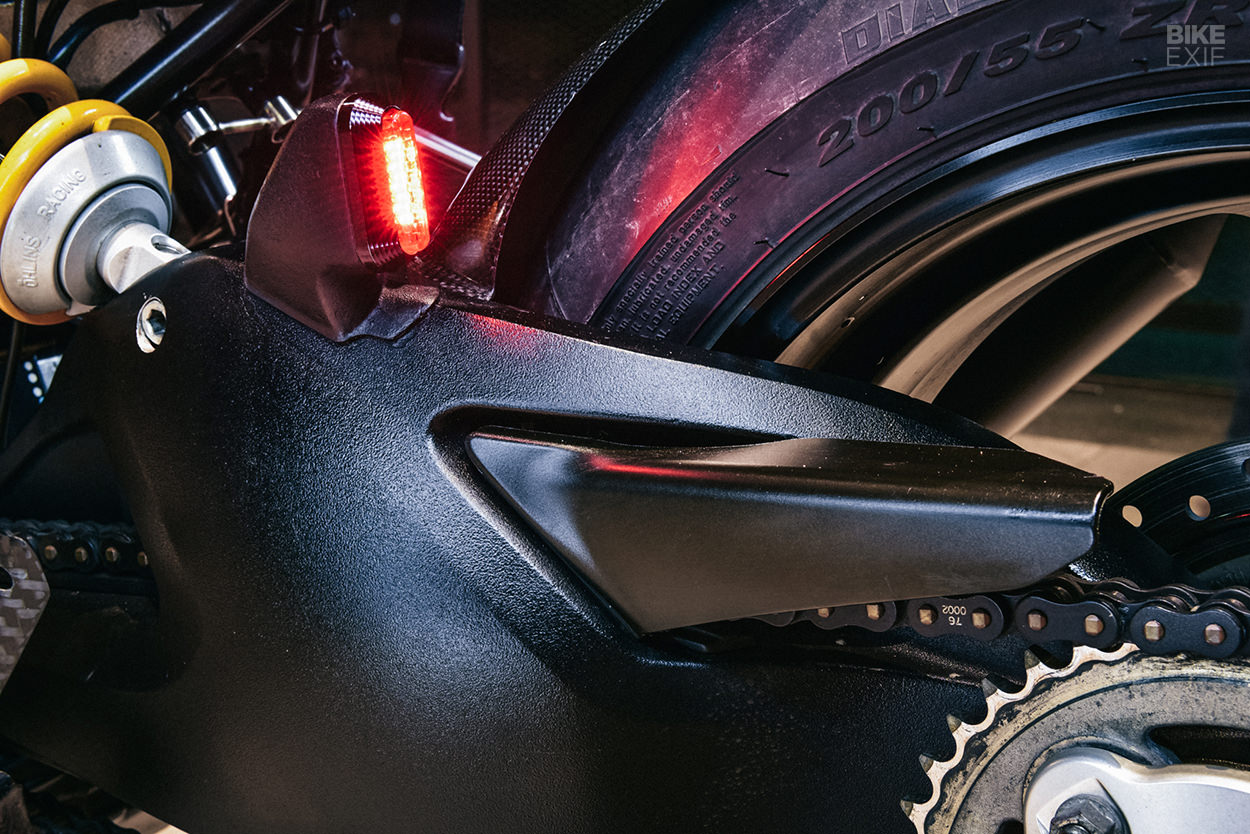
Nattapat has also fitted a single-sided swingarm, which is a Monster 796 item. (We’re especially taken with the tiny MotoGP-style taillight mounted on it.) And the wheels are now lightweight 17-inch forged five-spoke rims from OZ, with sticky Pirelli Diablo Supercorsa rubber spooned on.
The Scrambler 800 has generally appealing bodywork and proportions, so Nattapat has kept his changes relatively subtle. He’s replaced the tank with the simpler Scrambler Sixty2 item, which loses the fussy side panel detailing but retains the overall shape.
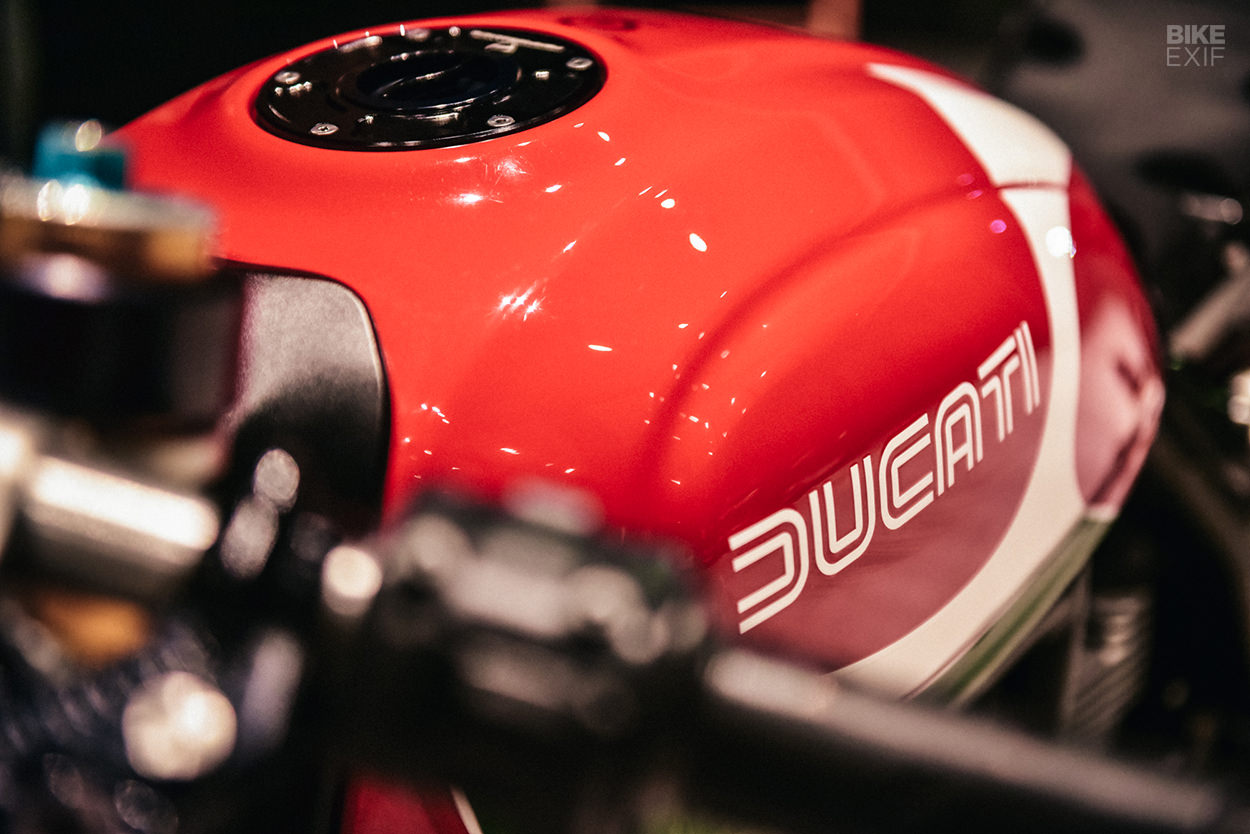
The tank is painted in the colors of the Italian flag, with the mid-70s version of the Ducati logo in white.
Nattapat then trimmed down the rear frame after working out the best shape in clay, and created a minimal new seat and tail unit. This section is now made from carbon fiber for a useful weight reduction.
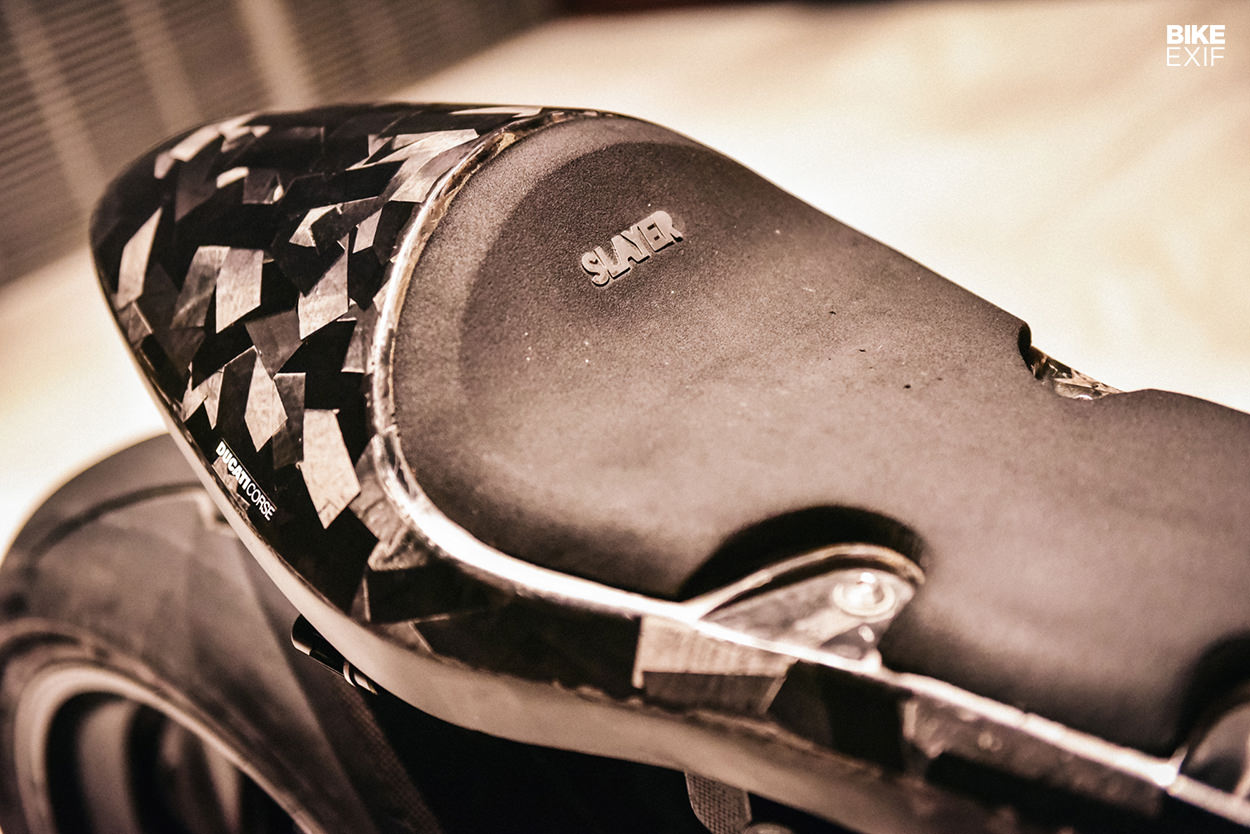
Carbon is liberally sprinkled throughout with a collection of smaller parts, but you have to look closely. Nattapat has made a compact funnel to swoosh air away from the space between the cylinder head and fuel tank, and a similar funnels to help cool the BMW S1000RR brake calipers.
These parts are produced in-house, too: as well as doing his own sketching and clay modeling, Nattapat has an autoclave in his Bangkok workshop so that he can produce small runs of carbon fiber parts.
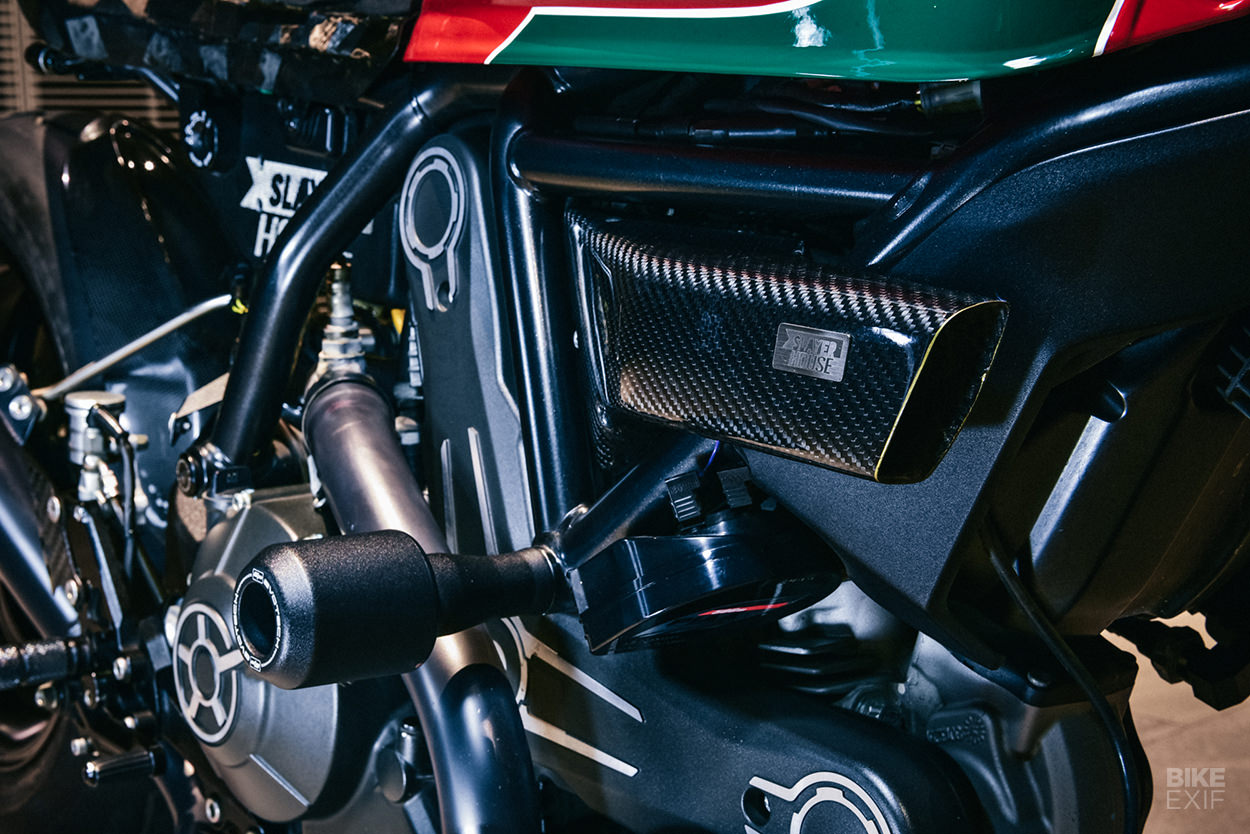
The effect is both slick and raw in equal measure, and you can bet this Scrambler is a huge step up dynamically from the stock bike. Fully fueled weight is likely to be just under 400 pounds (181 kilos), making ‘Rose Runner’ ideal for slaying switchbacks and tight urban streets.
We’ll end by wishing Nattapat the best of luck for his new startup. He’s nailed the style and nailed the performance upgrades, making this a very promising start indeed.
Slayer House Facebook | Instagram | Images by KAATO
